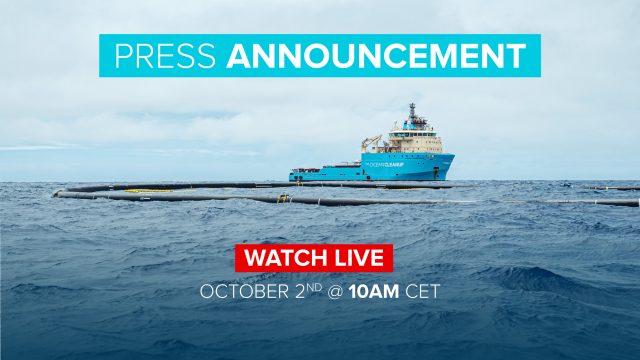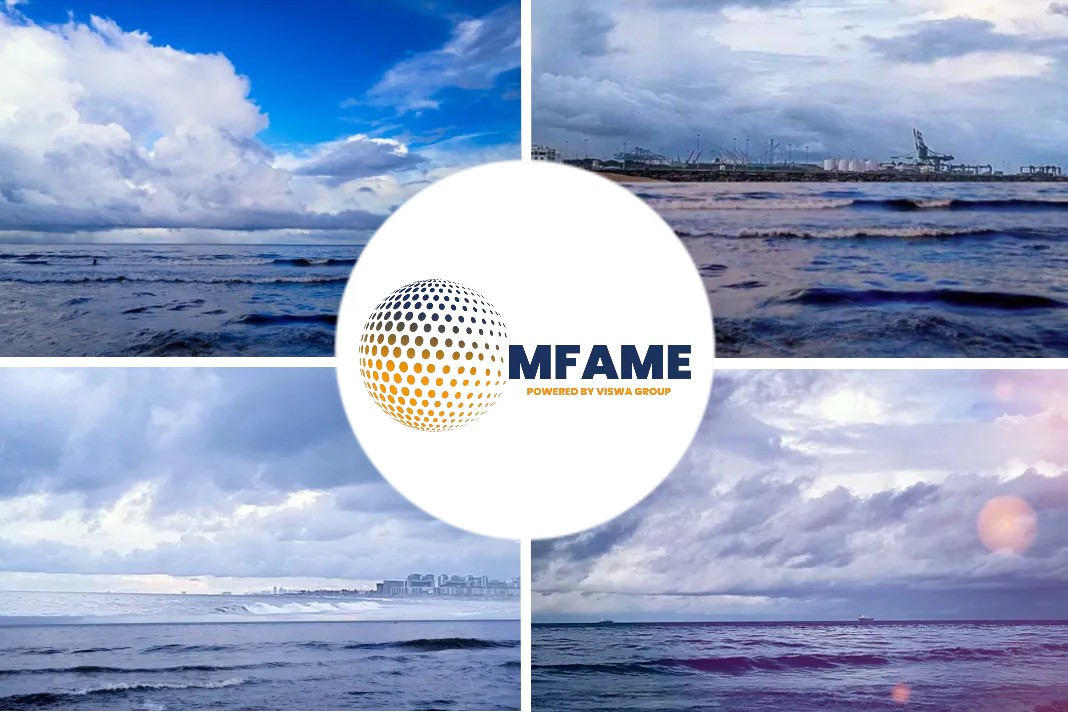Today, we announced that System 001/B is successfully capturing and collecting plastic debris, After one year of testing, we have succeeded in developing a self-contained system in the Great Pacific Garbage Patch that is using the natural forces of the ocean to passively catch and concentrate plastic, thereby confirming the most important principle behind the cleanup concept that was first presented by Boyan Slat at a TEDx conference in October 2012, states a press release published on the Ocean Cleaup website date 2nd October, 2019.
Attempts of Making the Sea Plastic Free
Launched from Vancouver in June, System 001/B is The Ocean Cleanup’s second attempt to prove its concept of collecting garbage from the Great Pacific Garbage Patch, the largest accumulation zone of plastic in the world’s oceans. In addition to collecting plainly visible pieces of plastic debris, as well as much larger ghost nets associated with commercial fishing, System 001/B has also successfully captured microplastics as small as 1mm – a feat we were pleasantly surprised to achieve.
Plastic Free Ocean: An Achievable Goal?
“After beginning this journey seven years ago, this first year of testing in the unforgivable environment of the high seas strongly indicates that our vision is attainable and that the beginning of our mission to rid the ocean of plastic garbage, which has accumulated for decades, is within our sights,” said Boyan Slat.
“Our team has remained steadfast in its determination to solve immense technical challenges to arrive at this point. Though we still have much more work to do, I am eternally grateful for the team’s commitment and dedication to the mission and look forward to continuing to the next phase of development.”

How did it happen?
That giant pile of plastic trash in the ocean just got a little smaller. Dutch inventor Boyan Slat’s Ocean Cleanup project recently collected its first plastic from the Great Pacific Garbage Patch, reports NPR.
Here’s the full press briefing explaining how did it happen.
From time to time on this program, we’ve checked in with Boyan Slat. He’s the Dutch engineer and environmentalist who’s been working on a contraption to clean the Great Pacific Garbage Patch. That’s the floating debris field in the Pacific where 1.8 trillion pieces of plastic have collected. Well, after many, many setbacks, Boyan Slat’s Ocean Cleanup project has had some success.
(SOUNDBITE OF PRESS CONFERENCE)
BOYAN SLAT: All right. So thank you all for joining us.
MARTIN: This week, Slat and his team presented a press conference to an online audience and a small group of journalists gathered at the group’s headquarters in Rotterdam.
(SOUNDBITE OF PRESS CONFERENCE)
SLAT: I am very proud to share with you that we’re now catching plastics.
(APPLAUSE)
SLAT: Yes. There’s our only two fans in the room. That’s great.
MARTIN: It is great, but surely not the reaction that Slat expected when he first dreamed up his plan to clean the ocean. Here’s Slat explaining his original concept the first time we spoke in 2016.
(SOUNDBITE OF ARCHIVED NPR BROADCAST)
SLAT: I envisioned an extremely long network of floating barriers. They’re like curtains floating in the ocean. And because it’s in a V shape, the plastic gets pushed towards the center. And that’s the spot where we can efficiently extract it from the seawater and store it before shipping it to land for recycling.
MARTIN: Well, as we know, Slat’s idea didn’t quite work as planned.
(SOUNDBITE OF PRESS CONFERENCE)
SLAT: The path of progress wasn’t exactly a straight line. And we began to refer to these issues that we had along the way as unscheduled learning opportunities, and we had quite a few.
MARTIN: First, as Slat explained at the press conference, his device floated along with the ocean’s current at the same speed as the debris it was meant to capture.
(SOUNDBITE OF PRESS CONFERENCE)
SLAT: Causing the system to actually not collect any plastics.
MARTIN: Then, late last year, part of the structure itself fell apart.
(SOUNDBITE OF PRESS CONFERENCE)
SLAT: Forcing us to tow the system back to port.
MARTIN: After six more months of tinkering, the modified prototype was redeployed to the floating garbage patch. And at this week’s press briefing, Slat was at long last able to share pictures of what the system has captured – an enormous abandoned fishing net, hardhats, office chairs, plastic forks.
(SOUNDBITE OF PRESS CONFERENCE)
SLAT: And, you know, car tire – no idea how that ended up there. But if you’re missing a wheel, let us know.
MARTIN: Boyan Slat acknowledges that this batch of trash is only a small first step. But by 2025, the Ocean Cleanup project hopes to cut the Great Pacific Garbage Patch in half.
NEW DESIGN LEADS TO IMPROVED PERFORMANCE
The aim of System 001/B was to trial modifications, which addressed known complications, primarily aimed at correcting the inconsistent speed difference between the system and the plastic. Consistency was achieved by slowing down the system with a parachute sea anchor, allowing for faster-moving plastic debris to float into the system. Once this main challenge was resolved, prominent plastic overtopping was observed – becoming the next technical challenge to solve. Due to the modularity of System 001/B, a modification to increase the size of the cork line was designed and implemented while the system was offshore. With the new cork line, minimal overtopping is now being observed, thus allowing the system to capture and concentrate the plastic.
THE MISSION CONTINUES
Despite the early success of System 001/B, there is still much work to do. With new learnings and experience derived from the successful deployment of System 001/B, The Ocean Cleanup will now begin to design its next ocean cleanup system, System 002; a full-scale cleanup system that is able to both endure and retain the collected plastic for long periods of time.
Once fully operational, The Ocean Cleanup will return plastic to land for recycling. The timing of that phase of the mission is contingent upon further testing and design iteration.
Did you subscribe to our daily newsletter?
It’s Free! Click here to Subscribe!
Source: The Ocean Cleanup















